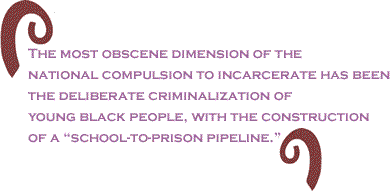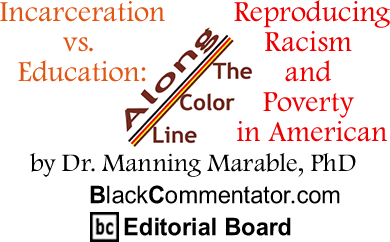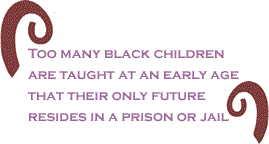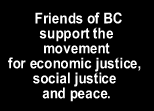
|
||||||||||||||||||||||
 |
||||||||||||||||||||||
 |
||||||||||||||||||||||
 |
||||||||||||||||||||||
 |
| The current issue is always free to everyone |
|
|
 |
 |
| Since 2004, former Democratic presidential candidate,
John Edwards, campaigned across the Americans are reinforced to believe that individuals are largely in control of their own destiny. Hard work, sacrifice, and personal effort, we are told, determine what happens to us. But increasingly, the fundamental institutions of American society function unfairly, restricting access and opportunity for millions of people. The greatest example of this is the present-day criminal justice system. Let us start with the basic facts. As of 2008,
one out of every one hundred American adults is living behind
bars. According to a December 2007 study of the American Civil
Liberties Union, “Race and Ethnicity in
A similar pattern is found within the juvenile
justice system. According to the 2007 ACLU study, African-American
youth amount to 15 percent of all American juveniles. However,
they represent 26 percent of all juveniles who are arrested
by the police nationwide. They are 58 percent of all youth who
are sentenced to serve time in state prisons. In What are the practical political consequences
of the mass incarceration of black Americans? In The most obscene dimension of the national compulsion to incarcerate has been the deliberate criminalization of young black people, with the construction of a “school-to-prison pipeline.” Under the cover of “zero tolerance” for all forms
of “disobedience,” too many school administrators are aggressively
and unfairly removing black youth from schools. Statistically,
African-American youths are two to three times more likely than
whites to be suspended, and far more likely to be corporally
punished or expelled. According to the ACLU’s study, “nationally,
African American students comprise 17 percent of the student
population, but account for 36 percent of school suspensions
and 31 percent of expulsions. In Meanwhile, state after state is reducing its
investments in education, while expanding its expenditures in
correctional facilities. According to the Chronicle of Higher Education
(March 14, 2008), between 1987 and 2007, states spent an average
of a 21 percent increase on higher education, but expanded their
corrections budgets by an average of 127 percent. Today, for
the first time in recent history, there are now five states
that spend more state money on prisons than on public colleges
– BlackCommentator.com Editorial Board member, Manning Marable, PhD is one
of
|
Your comments are always welcome. e-Mail re-print notice
If you send us an e-Mail message we may publish all or part of it, unless you tell us it is not for publication. You may also request that we withhold your name. Thank you very much for your readership. |
|
| March 20, 2008 Issue 269 |
|
| Executive Editor: Bill Fletcher, Jr. |
| Publisher: Peter Gamble |
| Printer Friendly Version in resizeable plain text format format |
 |
 |
 |
| |
| |























 There
is overwhelming evidence that the overrepresentation of blacks
in prisons is largely due to discrimination in every phase of
the criminal justice system. According to the 2007 ACLU study,
for example, African Americans comprised 11 percent of
There
is overwhelming evidence that the overrepresentation of blacks
in prisons is largely due to discrimination in every phase of
the criminal justice system. According to the 2007 ACLU study,
for example, African Americans comprised 11 percent of 





